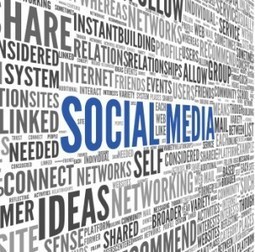Video are in for hospitals
19/01/2014Des accessoires connectés pour une meilleure performance sportive
19/01/2014Healthcare Success with Social Media
The idea of combining healthcare and social media may seem like an odd pairing, but the benefits are immeasurable and healthcare success with social media is possible. Social media marketing allows you to engage with your healthcare audience online while giving you the power to become a trusted expert. It allows you to show your human side—making patients more comfortable and feel like they have a deeper connection with their physicians or healthcare providers. Over half of the American population seeks healthcare information online, so why not utilize social media to interact with your patients? Facebook alone has over 1.1 billion monthly users. You can’t expect to reach these audiences by simply posting something on Facebook and walking away—you need to cultivate conversations and have a strong presence on your various platforms online.
Here are six reasons to build a robust online engagement program to help build your practice’s brand:
- – Increase your online visibility for prospective patients
- – Establish patient (and prospective patient) connections
- – Engage a targeted audience and grow relationships
- – Speak to individuals with common healthcare interests and issues
- – Show the personalized “people side” of healthcare providers and staff
- – Showcase community activities, doctors, services and professional achievements
Developing and monitoring social media profiles is one of the most valuable aspects of your healthcare marketing strategy. Below are some suggested platforms to help step up your social media game:
Facebook can help healthcare practices share important information, engage patients in conversations, attract followers, and increase community loyalty. You can customize information, brand your business and feature a lot of valuable information for patients. For example, your page can utilize a “Location” app to pull up a map of all of your facilities in the area and provide directions to patients. When it comes to purchase decisions, many consumers are using Facebook to ask for recommendations from friends and family, before they step foot inside your facility – and then give feedback as soon as they leave. Utilize Facebook to drive traffic to your blog, target specific demographics through advertising, encourage consumers to participate in contests and much more.
LinkedIn is a powerful tool to market your business to prospective patients and other business professionals, establish and grow your reputation, and build overall brand awareness. By setting up acompany page for your practice, you can begin connecting with potential partners and other healthcare providers allowing you to start discussions and establish yourself as an expert in your industry. Joining groups on LinkedIn that spark your interest and are relevant to your professional goals allow healthcare providers to connect and share ideas regarding professional, clinical and personal issues. It is also a great place to reach large professional audiences with advertisements and sponsored updates, allowing for easy tracking through a user-friendly analytics dashboard. LinkedIn is an effective means for reaching and building relationships with the right professionals in specific industries and roles.
Twitter is a great spot to advertise, connect with patients and physicians, and improve the public image of a healthcare organization. Besides utilizing the robust search features for conversations your business can get involved with and filling up those 140 character tweets with valuable information, Twitter is a great tool for live chats – allowing people to participate in conversations and interact with staff members in real time. Participating in a charitable or community event? Add a hashtag (#)! Adding a unique hashtag to a specific event or conversation will help keep the conversation organized, searchable and follow-able.
Healthcare organizations can use this platform to promote their image or identity. It is easy to forget about the human element in healthcare-use Pinterest to show patients the human side of your practice. You can create online pin boards with categories that speak to what your company stands for and is interested in—from fitness activities, relaxation tips and recipes, the possibilities are endless. If you have a blog, Pinterest is a great way to drives traffic back to your website-each pin includes a link back to the image’s original source. So include images in your blog posts! Need tips on how to connect with patients on Pinterest? Check these out!
YouTube
Online video is powerful but underutilized. YouTube can attract new patients, retain business, and boost search engine ranking by posting videos with testimonials, hospital information, or provider profiles. Using videos to help give advice, tell compelling stories, and focus on interesting content that has value to the user, YouTube is a highly effective communication tool to engage your healthcare audience and a great way to put a face and personality to what may have been perceived in the past as the disconnected and distant healthcare provider.
Patients want to hear from you and stay connected. When you consistently engage with your patients through social media, you instantly build a rapport with them and will become the first name that comes to mind whenever anyone thinks of a health care issue. If you decide to become involved with social media, be careful to include any medical disclaimers where necessary and ensure you are followingHIPAA guidelines.
See on www.visionmarketingaz.com




